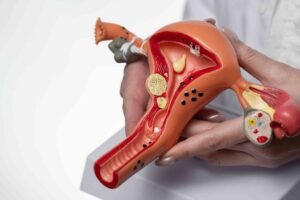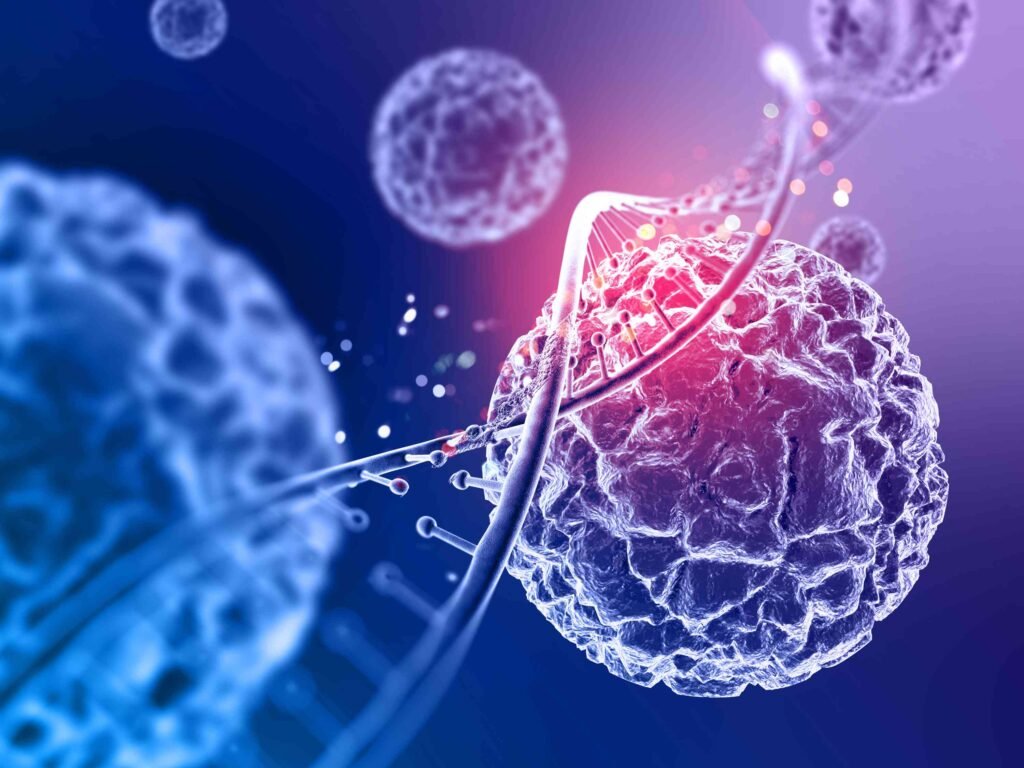Stem Cells in Infertility Treatment: A New Hope
Infertility is a heart-wrenching journey that millions of couples around the world face every year. It can be a source of emotional stress, financial strain, and relationship challenges. As science and medicine progress, treatments like IVF (In Vitro Fertilization), hormone therapies, and surgeries have helped many families grow. However, not all who struggle with infertility find success through these traditional methods. For those individuals and couples, stem cell therapy offers a new hope in the world of infertility treatment.
With the incredible advances in stem cell research, a fresh wave of possibilities is emerging. Stem cells, with their unique ability to regenerate and transform into various types of cells, may hold the key to treating infertility in both men and women. From restoring sperm production in men to regenerating eggs in women, the potential for stem cells in reproductive health is vast. This blog will explore the science behind stem cell therapy for infertility, the breakthroughs in research, ethical considerations, and the exciting future this treatment offers.
What Are Stem Cells?
Before diving into the role of stem cells in infertility treatment, let’s start with a simple explanation of what stem cells are. Think of stem cells as the building blocks of the body. They are unique because they have the ability to develop into many different types of cells, from brain cells to muscle cells and, importantly for our discussion, reproductive cells like sperm and eggs.
There are different types of stem cells, but the most commonly discussed in infertility research are embryonic stem cells and adult stem cells. Embryonic stem cells can become any type of cell in the body, which makes them incredibly versatile. Adult stem cells are more specialized but still offer a lot of potential when it comes to regenerating damaged tissues or creating specific types of cells.
Stem cells can replicate indefinitely and have the ability to repair damaged tissues in the body. This regenerative property is precisely what makes them so exciting for the world of infertility treatment. The possibility of using stem cells to help men and women who face reproductive challenges is gaining momentum, and ongoing research is uncovering new ways these cells can be harnessed for fertility restoration.
How Can Stem Cells Help in Infertility Treatment?
The ability of stem cells to transform into different cell types opens the door to a wide array of medical applications, including infertility treatment. The primary goal of using stem cells in this context is to regenerate or repair damaged reproductive tissues, restore fertility, or even create entirely new sperm or egg cells.
Stem Cells and Male Infertility
For men, infertility can be caused by a range of factors including low sperm count, poor sperm quality, or even the complete absence of sperm, known as azoospermia. Traditionally, treatments like hormone therapy or surgical sperm retrieval have been used to help men with infertility. However, these methods don’t always lead to successful pregnancies.
Stem cell therapy is showing great promise in the realm of male infertility. Researchers have been investigating the possibility of using spermatogonial stem cells (the cells responsible for sperm production) to regenerate sperm in men who are unable to produce healthy sperm naturally. These stem cells can potentially be isolated and used to regenerate new, functional sperm cells, offering a solution where traditional methods fall short.
Early animal studies have shown success in regenerating sperm production using stem cells. In fact, scientists have been able to restore fertility in infertile male mice by injecting stem cells into their testes. While human trials are still in the early stages, these results offer hope that stem cells could one day provide a revolutionary infertility treatment option for men who struggle to conceive.

Stem Cells and Female Infertility
Female infertility is often more complex, involving issues such as diminished ovarian reserves, premature ovarian failure, blocked fallopian tubes, or uterine abnormalities. Women may also experience infertility due to age-related decline in egg quality and quantity. IVF and other fertility treatments have long been used to help women conceive, but they are not a guarantee for success, particularly for women with severe reproductive issues.
Stem cells could provide new solutions for women facing infertility. One area of research focuses on ovarian rejuvenation, using stem cells to potentially regenerate eggs in women who no longer produce viable eggs on their own. Some studies suggest that stem cells could activate dormant ovarian cells, encouraging the production of new, healthy eggs, even in women who have undergone menopause or have poor ovarian function.
Additionally, stem cells may offer hope for women with uterine issues. Researchers are investigating how stem cells might be used to repair damaged uterine tissues, creating a healthier environment for embryo implantation. This could be a game-changer for women who have experienced repeated miscarriages or failed IVF cycles due to uterine problems.

Stem Cells in IVF
Even though IVF is one of the most widely used treatments for infertility, it doesn’t always work. Many couples go through multiple cycles of IVF without success, leaving them emotionally and financially drained. Stem cells may one day offer a way to enhance or replace IVF altogether. Researchers are exploring how stem cells can be used to improve the success rates of IVF by improving egg quality, sperm quality, or even creating lab-grown gametes (sperm and eggs) from stem cells.
The idea of creating eggs or sperm from stem cells is particularly exciting for individuals or couples who cannot produce their own due to genetic conditions or severe reproductive damage. Imagine the possibility of using stem cells to generate healthy, viable gametes that could be used in IVF, giving hope to individuals who otherwise may not have the option of biological parenthood.
Breakthroughs in Stem Cell Research for Infertility Treatment
Stem cell research is an exciting and fast-moving field. Recent breakthroughs in the use of stem cells for infertility treatment have made headlines, offering real hope to those who have struggled with reproductive challenges. Here are some of the key advancements in this area:
1. Sperm Creation from Stem Cells
Scientists have successfully created sperm cells from stem cells in laboratory settings. In one groundbreaking study, researchers in China were able to transform stem cells into sperm cells, which were then used to fertilize eggs, resulting in healthy offspring in mice. While these studies are still in the experimental stages, they show incredible potential for treating male infertility in humans.
2. Ovarian Rejuvenation
Research on ovarian rejuvenation using stem cells is progressing rapidly. Early studies have shown that injecting stem cells into the ovaries of women with premature ovarian failure or poor ovarian reserves can improve ovarian function and even lead to spontaneous pregnancies. Though more research is needed to confirm these findings, the results are promising.

3. Stem Cells for Uterine Repair
For women with uterine factor infertility, stem cells may offer a solution. Researchers are exploring how stem cells can be used to regenerate uterine tissue, potentially allowing women with damaged or dysfunctional uteruses to carry a pregnancy to term. This could provide a solution for women who have had repeated implantation failures or who cannot conceive due to uterine abnormalities.
Ethical Considerations in Stem Cell-Based Infertility Treatment
As with any new medical technology, there are ethical considerations that must be addressed when it comes to using stem cells for infertility treatment. One of the main ethical concerns revolves around the use of embryonic stem cells, which are derived from early-stage embryos. Some individuals and groups oppose the use of embryonic stem cells on the grounds that it involves the destruction of embryos, raising moral questions about the beginning of human life.
Fortunately, alternatives to embryonic stem cells are being developed. Induced pluripotent stem cells (iPSCs) offer one such alternative. These stem cells are created by reprogramming adult cells (such as skin cells) to behave like embryonic stem cells. Since iPSCs do not involve the use of embryos, they offer a more ethically acceptable option for many people.
Another ethical consideration is the safety of stem cell treatments. Stem cell therapies are still relatively new, and there are concerns about the long-term effects and potential risks, such as tumor formation or unintended cell growth. As research progresses, it will be essential to ensure that stem cell-based infertility treatments are safe and effective before they become widely available.
The Future of Infertility Treatment: A New Era of Hope
The future of infertility treatment is brighter than ever before, thanks to the promising advancements in stem cell research. While stem cell-based treatments are still largely experimental, the potential they hold is undeniable. For individuals and couples who have struggled with infertility and have exhausted traditional treatments, stem cells offer a glimmer of hope.
As researchers continue to uncover new ways to harness the power of stem cells for reproductive health, it’s likely that these therapies will become more refined and widely available in the coming years. From restoring natural fertility to creating lab-grown sperm and eggs, the possibilities are vast. While there is still much to learn and many challenges to overcome, the progress made so far is inspiring.
For couples who have faced disappointment after disappointment in their fertility journey, the idea that stem cells could one day help them achieve their dream of parenthood is nothing short of revolutionary. Whether it’s regenerating damaged reproductive tissues, restoring egg or sperm production, or improving the success rates of IVF, stem cell therapy represents a new frontier in infertility treatment.

Conclusion: A New Hope for Infertility Treatment
Infertility can be a deeply challenging experience, but stem cell therapy offers an exciting new path forward. While the research is still evolving, the potential of stem cells in infertility treatment is undeniable. From female infertility linked to ovarian failure or uterine problems to male infertility caused by sperm production issues, stem cells could provide solutions that current treatments simply can’t.
As stem cell research advances, in the years to come, we may witness a complete transformation in how infertility is treated. For now, we can hold on to the hope that one day, stem cells will offer a reliable, accessible, and safe solution for millions of individuals and couples.



